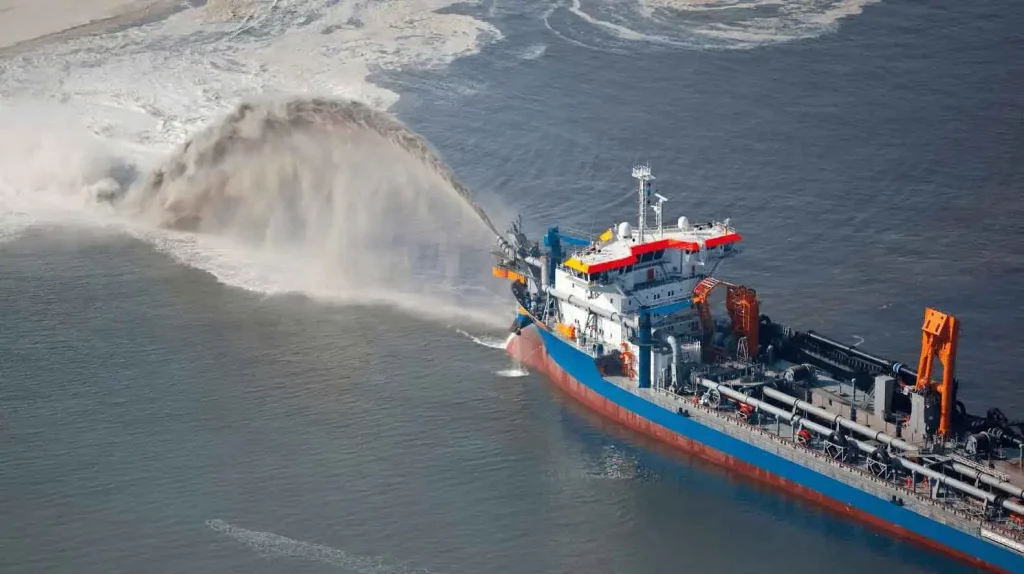Selecting the right pump and dredging equipment is crucial for the success of any project in Ireland. The unique geographical and environmental conditions and specific project requirements necessitate a careful and informed decision-making process. This guide provides expert insights into the key considerations and best practices for choosing the right equipment to ensure efficient and successful project outcomes.
Understanding Project Requirements
Before selecting any equipment, it is essential to have a comprehensive understanding of the project requirements. This involves assessing the scope, scale, and objectives of the project. Key questions to consider include:
- What is the type of material to be dredged? Different materials, such as sand, silt, clay, or gravel, require different types of equipment.
- What is the depth and area of the dredging site? The size and depth of the site will influence the type and size of the dredging equipment needed.
- What are the environmental conditions? Water currents, tides, and weather conditions can impact equipment performance and selection.
- What is the desired outcome? Whether the goal is land reclamation, harbor maintenance, or environmental restoration, the end objective will guide the choice of equipment.
Types of Dredging Equipment
Several types of dredging equipment are commonly used in projects across Ireland. Each type has its specific applications and benefits:
- Cutter Suction Dredgers (CSDs)
CSDs are versatile and powerful machines ideal for dredging compacted sediments and hard materials. They use a rotating cutter head to loosen the material, which is then sucked up by a pump and discharged through a pipeline. CSDs are suitable for many projects, from port construction to land reclamation.
- Trailing Suction Hopper Dredgers (TSHDs)
TSHDs are self-propelled vessels equipped with suction pipes and hoppers. They are highly efficient for dredging loose and soft materials such as sand and silt. TSHDs are often used for maintenance dredging in ports and waterways and for beach nourishment projects.
- Backhoe Dredgers
Backhoe dredgers are stationary platforms equipped with a hydraulic backhoe for excavating material. They are particularly effective for dredging in confined areas and near structures. Backhoe dredgers are commonly used for precise tasks such as quay wall construction and harbor deepening.
- Bucket Ladder Dredgers
Bucket ladder dredgers use a series of buckets mounted on a ladder to scoop up material from the seabed. They are suitable for dredging materials and can operate in shallow and deep waters. These dredgers are often used in mining and large-scale land reclamation projects.
Types of Pumps
The choice of pump is equally essential and depends on the material’s nature and the required discharge distance. Common types of pumps used in dredging projects include:
- Centrifugal Pumps
Centrifugal pumps are widely used in dredging due to their efficiency and ability to handle large volumes of water and slurry. They convert rotational energy into kinetic energy, creating a material flow through the pump.
- Submersible Pumps
Submersible pumps are designed to operate underwater and are ideal for pumping thick slurries and sediments. They are highly durable and can handle abrasive materials, making them suitable for harsh dredging environments.
- Hydraulic Pumps
Hydraulic pumps use pressurized fluid to move material and are commonly used with hydraulic dredging equipment. They are powerful and capable of handling high-density slurries and sediments.
Environmental Considerations
Environmental protection is a critical aspect of any dredging project in Ireland. Equipment that minimizes environmental impact and complies with local regulations must be chosen. This includes selecting equipment with low emissions, using silt curtains to contain turbidity, and employing best practices for sediment disposal.
Maintenance and Support
Reliable maintenance and support are crucial for the successful operation of dredging equipment. Choose equipment from reputable manufacturers and suppliers offering comprehensive support services, including maintenance, repairs, and availability of spare parts. Regular maintenance ensures optimal performance and extends the equipment’s lifespan.
Conclusion
Choosing the right pump and dredging equipment for successful projects in Ireland requires careful consideration of project requirements, equipment capabilities, and environmental factors. By understanding the project’s specific needs and selecting appropriate equipment, you can ensure efficient, cost-effective, and environmentally responsible dredging operations. Partnering with experienced suppliers and maintaining the equipment properly will further contribute to the success of your dredging projects.


